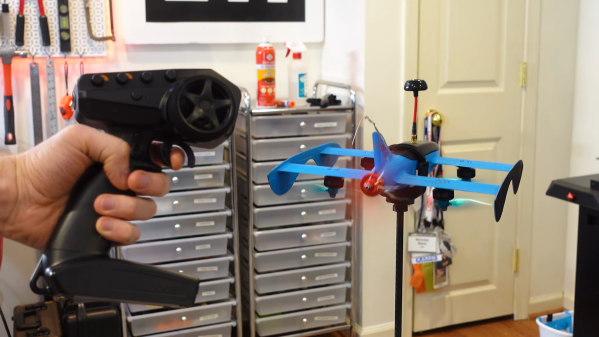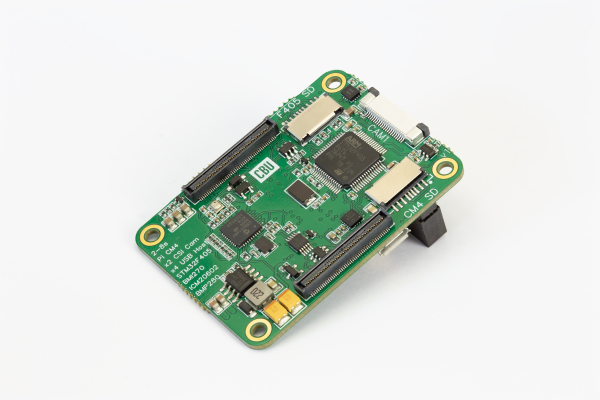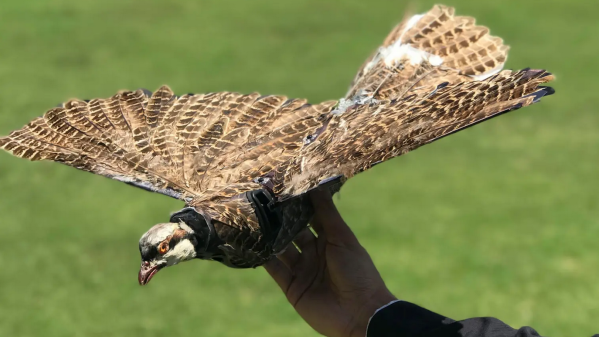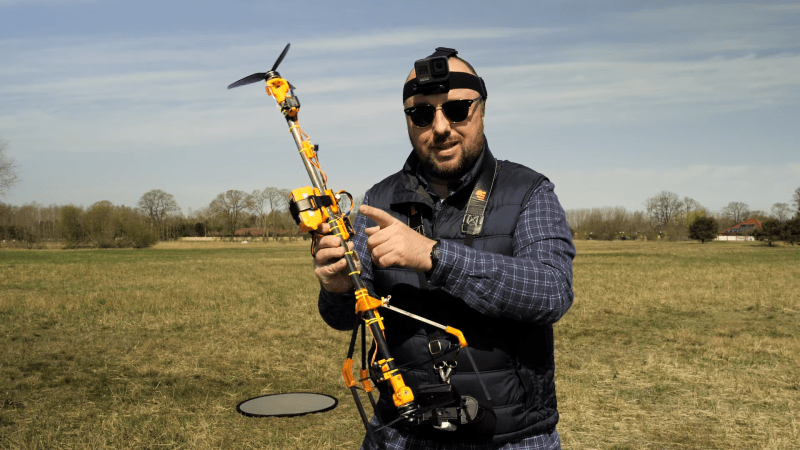Apple’s Vision Pro augmented reality goggles made a big splash in the news this week, and try as we might to resist the urge to dunk on them, early adopters spotted in the wild are making it way too easy. Granted, we’re not sure how many of these people are actually early adopters as opposed to paid influencers, but there was still quite a bit of silliness to be had, most of it on X/Twitter. We’d love to say that peak idiocy was achieved by those who showed themselves behind the wheels of their Teslas while wearing their goggles, with one aiming for an early adopter perfecta, but alas, most of these stories appear to be at least partially contrived. Some people were spotted doing their best to get themselves killed, others were content to just look foolish, especially since we’ve heard that the virtual keyboard is currently too slow for anything but hunt-and-peck typing, which Casey Niestat seemed to confirm with his field testing. After seeing all this, we’re still unsure why someone would strap $4,000 worth of peripheral-vision-restricting and easily fenced hardware to their heads, but hey — different strokes. And for those of you wondering why these things are so expensive, we’ve got you covered.
uav91 Articles
Fly Like You Drive With This Flying RC Drift Car
So it’s 2023, and you really feel like we should have flying cars by now, right? Well, as long as you ignore the problem of scale presented by [Nick Rehm]’s flying RC drift car, we pretty much do.
At first glance, [Nick]’s latest build looks pretty much like your typical quadcopter. But the design has subtle differences that make it more like a car without wheels. The main difference is the pusher prop at the aft, which provides forward thrust without having to pitch the entire craft. Other subtle clues include the belly-mounted lidar and nose-mounted FPV camera, although those aren’t exactly unknown on standard UAVs.
The big giveaway, though, is the RC car-style remote used to fly the drone. Rather than use the standard two-joystick remote, [Nick] rejiggered his dRehmFlight open-source flight control software to make operating the drone less like flying and more like driving. The lidar is used to relieve the operator of the burden of altitude keeping by holding the drone at about a meter or so off the deck. And the video below shows it doing a really good job of it, for the most part — with anything as complicated as the multiple control loops needed to keep this thing in the air, it’s easy for a sudden input to confuse things.
We have to admit that [Nick]’s creation looks like a lot of fun to fly, or drive — whichever way you want to look at it. Either way, we like the simplification of the flight control system and translating the driving metaphor into flying — it seems like that’ll be something we need if we’re ever to have full-size flying cars.
Continue reading “Fly Like You Drive With This Flying RC Drift Car”
UAV Flight Controller Saves Weight
When building autonomous airborne vehicles like drones or UAVs, saving a little bit of weight goes a long way, literally. Every gram saved means less energy needed to keep the aircraft aloft and ultimately more time in the air, but unmanned vehicles often need to compromise some on weight in order to carry increased computing abilities. Thankfully this one carries a dizzying quantity of computer power for an absolute minimum of weight, and has some clever design considerations to improve its performance as well.
The advantage of this board compared to other similar offerings is that it is built to host a Raspberry Pi Compute Module 4, while the rest of the flight controllers are separated out onto a single circuit board. This means that the Pi is completely sandboxed from the flight control code, freeing up computing power on the Pi and allowing it to run a UAV-specific OS like OpenHD or RubyFPV. These have a number of valuable tools available for unmanned flight, such as setting up a long range telemetry and camera links. The system itself supports dual HD camera input as well as additional support for other USB devices, and also includes an electronic speed controller mezzanine which has support for quadcopters and fixed wing crafts.
Separating non-critical tasks like cameras and telemetry from the more important flight controls has a number of benefits as well, including improved reliability and simpler software and program design. And with a weight of only 30 grams, it won’t take too much cargo space on most UAVs. While the flight computer is fairly capable of controlling various autonomous aircraft, whether it’s a multi-rotor like a quadcopter or a fixed wing device, you might need a little more computing power if you want to build something more complicated.
That Drone Up In The Sky? It Might Be Built Out Of A Dead Bird
In a lot of ways, it seems like we’re in the “plateau of productivity” part of the hype cycle when it comes to drones. UAVs have pretty much been reduced to practice and have become mostly an off-the-shelf purchase these days, with a dwindling number of experimenters pushing the envelope with custom builds, like building drones out of dead birds.
These ornithopomorphic UAVs come to us from the New Mexico Insitute of Mining and Technology, where [Mostafa Hassanalian] runs the Autonomous Flight and Aquatic Systems lab. While looking into biomimetics, [Dr. Hassanalian] hit upon the idea of using taxidermy birds as an airframe for drones. He and his team essentially reverse-engineered the birds to figure out how much payload they’d be able to handle, and added back the necessary components to make them fly again.
From the brief video in the tweet embedded below, it’s clear that they’ve come up with a huge variety of feathered drones. Some are clearly intended for testing the aerodynamics of taxidermy wings in makeshift wind tunnels, while others are designed to actually fly. Propulsion seems to run the gamut from bird-shaped RC airplanes with a propeller mounted in the beak to true ornithopters. Some of the drones clearly have a conventional fuselage with feathers added, which makes sense for testing various subsystems, like wings and tails.
It’s easy to mock something like this, and the jokes practically write themselves. But when you think about it, the argument for a flying bird-shaped robot is pretty easy to make from an animal behavior standpoint. If you want to study how birds up close while they’re flying, what better way than to send in a robot that looks similar to the other members of the flock? And besides, evolution figured out avian flight about 150 million years ago, so studying how birds do it is probably going to teach us something.
Continue reading “That Drone Up In The Sky? It Might Be Built Out Of A Dead Bird”
Hackaday Links: September 18, 2022
We always love when people take the trouble to show information in new, creative ways — after all, there’s a reason that r/dataisbeautiful exists. But we were particularly taken by this version of the periodic table of the elements, distorted to represent the relative abundance on Earth of the 90 elements that make up almost everything. The table is also color-coded to indicate basically how fast we’re using each element relative to its abundance. The chart also indicates which elements are “conflict resources,” basically stuff people fight over, and which elements go into making smartphones. That last bit we thought was incomplete; we’d have sworn at least some boron would be somewhere in a phone. Still, it’s an interesting way to look at the elements, and reminds us of another way to enumerate the elements.
It’s wildfire season in the western part of North America again, and while this year hasn’t been anywhere near as bad as last year — so far — there’s still a lot of activity in our neck of the woods. And wouldn’t you know it, some people seem to feel like a wildfire is a perfect time to put up a drone. It hardly seems necessary to say that this is A Really Bad Idea™, but for some reason, people still keep doing it. Don’t misunderstand — we absolutely get how cool it is to see firefighting aircraft do their thing. The skill these pilots show as they maneuver their planes, which are sometimes as large as passenger jets, within a hundred meters of the treetops is breathtaking. But operating a drone in the same airspace is just stupid. Not only is it likely to get you in trouble with the law, but there’s a fair chance that the people whose property and lives are being saved by these heroic pilots won’t look kindly on your antics.
When Sticks Fly
When it comes to hobby rotorcraft, it almost seems like the more rotors, the better. Quadcopters, hexacopters, and octocopters we’ve seen, and there’s probably a dodecacopter buzzing around out there somewhere. But what about going the other way? What about a rotorcraft with the minimum complement of rotors?
And thus we have this unique “flying stick” bicopter. [Paweł Spychalski]’s creation reminds us a little of a miniature version of the “Flying Bedstead” that NASA used to train the Apollo LM pilots to touch down on the Moon, and which [Neil Armstrong] famously ejected from after getting the craft into some of the attitudes this little machine found itself in. The bicopter is unique thanks to its fuselage of carbon fiber tube, about a meter in length, each end of which holds a rotor. The rotors rotate counter to each other for torque control, and each is mounted to a servo-controlled gimbal for thrust vectoring. The control electronics and battery are strategically mounted on the tube to place the center of gravity just about equidistant between the rotors.
But is it flyable? Yes, but just barely. The video below shows that it certainly gets off the ground, but does a lot of bouncing as it tries to find a stable attitude. [Paweł] seems to think that the gimballing servos aren’t fast enough to make the thrust-vectoring adjustments needed to keep a stick flying, and we’d have to agree.
This isn’t [Paweł]’s first foray into bicopters; he earned “Fail of the Week” honors back in 2018 for his coaxial dualcopter. The flying stick seems to do much better in general, and kudos to him for even managing to get it off the ground.
Hackaday Links: April 17, 2022
There are plenty of stories floating around about the war in Ukraine, and it can be difficult to sort out which ones are fact-based, and which are fabrications. Stories about the technology of the war seem to be a little easier to judge, and so stories about an inside look at a purported Russian drone reveal a lot of interesting technical details. The fixed-wing UAV, reported to be a Russian-made “Orlan,” looks quite the worse for wear as it’s given a good teardown by someone wearing Ukraine military fatigues. In fact, it looks downright homemade, with a fuel tank made from what looks like an old water bottle, liberal use of duct tape to hold things together, and plenty of hot glue sprinkled around — field-expedient repairs, perhaps? The big find, though, is that the surveillance drone carried a rather commonplace — and cheap — Canon EOS Rebel camera. What’s more, the camera is nestled into a 3D printed cradle, strapped in with some hook-and-loop tape, and its controls are staked in place with globs of glue. It’s an interesting collection of hardware for a vehicle said to cost the Russian military something like $100,000 to field. The video below shows a teardown of a different Orlan with similar results, plus a lot of dunking on the Russians by a cheery bunch of Ukrainians.
















